Reference Glyphs for Chinese Computer Systems in Hong Kong
Chinese characters have a long history of development and are widely used around the world today. One of the characteristics of this diverse set of sophisticated writing symbols is that a character may have multiple glyphs and can be very different in form or shape even when written in the same style. Computer software developers may choose different glyphs when developing their own Chinese font products.
In the 1990s, Chinese computer systems began to grow in popularity. As Hong Kong and Taiwan used similar Chinese writing systems, the Chinese computer platforms of Taiwan and the Big-5 coding standard developed by its computer industry were widely adopted in Hong Kong. Font products compliant with the Big-5 also became prevalent in Hong Kong. However, Hong Kong’s writing convention is in some ways different from that of the Big-5.
In 2002, the Government of the Hong Kong Special Administrative Region (HKSAR), in collaboration with the Chinese Language Interface Advisory Committee (CLIAC), developed a set of two guidelines, namely the Reference Guide on Kai Style Character Glyphs for Chinese Computer Systems in Hong Kong and the Reference Guide on Song Style (Print Style) Character Glyphs for Chinese Computer Systems in Hong Kong. The two guidelines serve as a source of reference for the industry to promote the development of font products which can reflect the actual shape of glyphs commonly used in Hong Kong.
In 2016, the HKSAR Government again collaborated with CLIAC and developed the Reference Glyphs for Chinese Computer Systems in Hong Kong (the Reference Glyphs). By taking a character-based approach, the Reference Glyphs is designed to provide a complete set of Chinese glyphs which covers all the characters in the Hong Kong Supplementary Character Set–2016 and Big-5 characters, supplementing the above-mentioned component-based guidelines.
Through comparing the differences between the glyphs commonly used in Hong Kong and those specified in the Big-5, the Reference Glyphs gives specific description of the glyphs used in Hong Kong, hence clearly presenting the glyph of each character in the H-column of the ISO/IEC 10646 international coding standard. It provides an easy reference for glyph comparison, facilitating the development and wider adoption of Chinese font products, which will allow the public to employ glyphs commonly used in Hong Kong in handling computer information in Chinese.
Full document here (Chinese Version Only; zip file format, 75MB. Please note that it is not the intention of the document to set standards for characters commonly used in Hong Kong, or to impose any restrictions on the styles adopted by font developers.)
List of Contents of the Reference Glyphs for Chinese Computer Systems in Hong Kong
- Theme
- General Principles
- Scope
- References
- Terminology
- Principles adopted in comparing the glyphs of Hong Kong characters with those of Big-5 and Taiwan Song characters
- Minor differences in style (not considered as differences in glyph)
- Glyph differences between Hong Kong, Big-5 and Taiwan Song characters
- Handling of inconsistencies and mistakes in Big-5 character glyphs
Appendix: Rules for Changing a Right-falling Stroke to a Dot in Glyphs for Chinese Computer Systems
Tables:
- Table 1: Code Table of Hong Kong Kai Style Character Glyphs
- Table 2: Code Table of Hong Kong Song Style Character Glyphs
- Table 3: Differences in Component between Hong Kong Characters and Big-5 Characters
- Table 4: Differences in Component between Hong Kong Characters and Taiwan Song Characters
- Table 5: Differences in Glyph between Hong Kong Characters and Big-5/Taiwan Song Characters
- Table 6: Big-5 Characters with Problematic Glyphs
Number of characters approved since publication of HKSCS-2016: 3
The CLIAC approved the mapping amendment of the HKSCS character "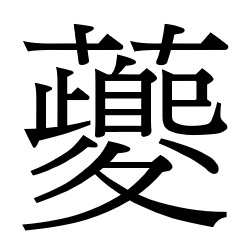 " (H-8FA8) from the CJK Compatibility Ideographs Supplement code point 2F9B2 to the CJK Unified Ideographs Extension B code point 270F0 at its 25th meeting held on 11 January 2018.
" (H-8FA8) from the CJK Compatibility Ideographs Supplement code point 2F9B2 to the CJK Unified Ideographs Extension B code point 270F0 at its 25th meeting held on 11 January 2018.
The CLIAC approved the inclusion of the character "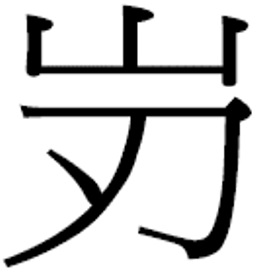 " (U+5C83, HD-5C83) in the HKSCS at its 26th meeting held on 14 January 2019.
" (U+5C83, HD-5C83) in the HKSCS at its 26th meeting held on 14 January 2019.
The CLIAC approved the inclusion of the characters "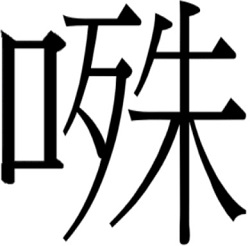 " (U+2D25D, HD-2D25D) and "
" (U+2D25D, HD-2D25D) and "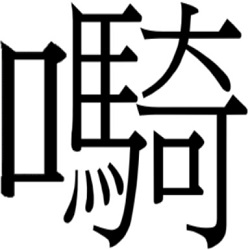 " (U+2BB37, HD-2BB37)in the HKSCS, as well as the glyph change for the character "𢫏" (U+22ACF, H-8ACB) to "
" (U+2BB37, HD-2BB37)in the HKSCS, as well as the glyph change for the character "𢫏" (U+22ACF, H-8ACB) to "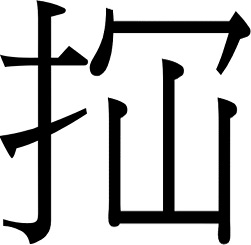 " at its 28th meeting held on 3 February 2021.
" at its 28th meeting held on 3 February 2021.
After several amendments are published, the Working Group of CLIAC will, subject to the actual needs, recommend that the CLIAC consolidate these amendments and publish a new version of the HKSCS.
The ISO/IEC 10646 is widely adopted by popular operating systems, database software, office automation (OA) suites, web browsers, e-mail clients and input devices. With the HKSCS included in the ISO/IEC 10646, users of popular computer products which adopt the ISO/IEC 10646 will be able to use Chinese characters contained in the HKSCS.